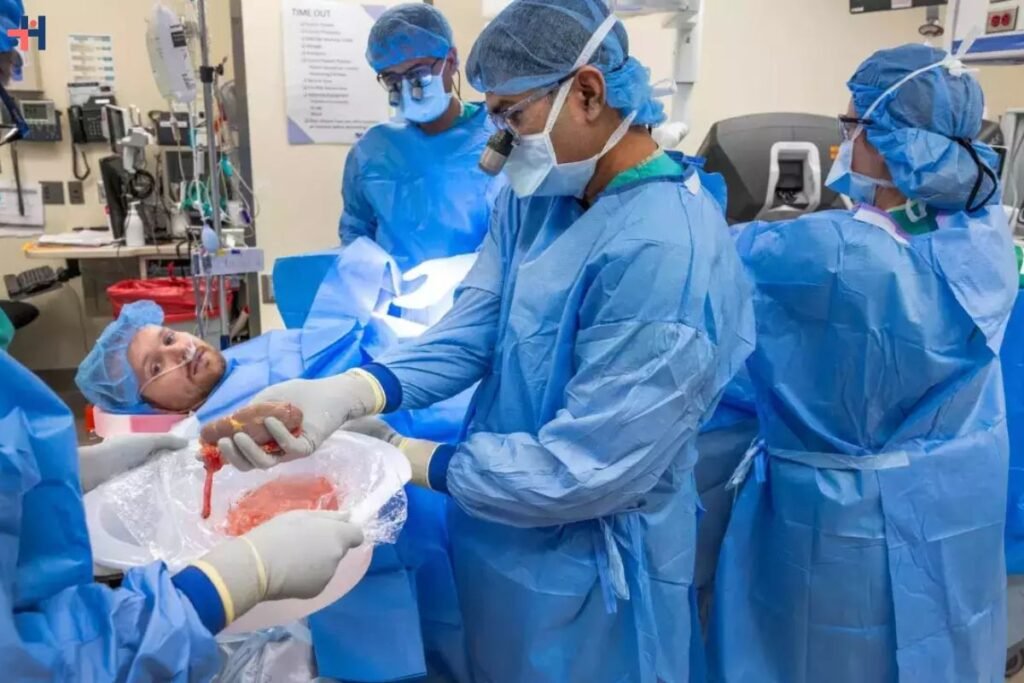(Source-Times-Now)
Doctors in the U.S. have successfully performed kidney transplant surgery on a man who was awake throughout the whole procedure.
On May 24, John Nicholas became the first person at Northwestern Medicine in Chicago to receive a new kidney without general anesthetic and to go home the next day. Although this approach has been used worldwide before, it remains far from routine.
The 28-year-old was discharged in under 24 hours, whereas kidney transplant patients typically remain in the hospital for several days or up to a week.
A Unique Approach to Anesthesia
During Nicholas’ surgery, doctors injected anesthetic into the fluid surrounding the lower spinal cord. They also lightly sedated him for comfort, according to a statement. Sedation relaxes and makes a patient drowsy without causing them to lose consciousness.
The surgery took less than two hours, and Nicholas didn’t feel any pain. At one point during the procedure, he even saw his new kidney, donated by his best friend, Pat Wise, before it was implanted into his body.
“That particular moment where I saw the kidney in Dr. Nadig’s hands — like [it was] extremely powerful to see that,” Nicholas said at a press conference Monday (June 24). Within 24 hours of the procedure, Nicholas walked out of the hospital.
A Life-Changing Experience
Nicholas had experienced kidney issues since he was 16, culminating in the need for a transplant. Lab work revealed inflammation was damaging his kidneys, but its exact cause remains undetermined.
Now, several weeks after surgery, Nicholas is active again and can enjoy a less restrictive diet, including his favorite pizza. Before the surgery, he had to limit his salt intake because excess salt can negatively impact kidney function.
“I’ve hit 10,000 steps, I think, every day in the last week, and I don’t do that normally. So definitely doing well,” Nicholas said.
Challenging the Status Quo
This isn’t the first time spinal and local anesthetic, rather than general anesthesia, has been used during kidney transplantation, according to Dr. Satish Nadig, one of the surgeons who performed the transplantation. Local anesthetic is also used for various major surgeries, including joint replacements and cesarean sections.
However, kidney transplants, which have saved hundreds of thousands of lives in the U.S. alone, are usually performed under general anesthetic. Most patients also have to spend several days to a week recovering in the hospital afterward. This is partly because general anesthesia can temporarily affect a patient’s memory, concentration, and reflexes.
Benefits of the New Approach
This new approach challenges the “status quo” of kidney transplantation, especially given that Nicholas recovered so quickly after surgery, Nadig said. The status quo has remained largely unchanged since the first successful human kidney transplant was performed in 1954, he noted.
Avoiding general anesthesia could potentially reduce patients’ hospital stays, which would also reduce the risk of hospital-acquired infections. The new approach could also make transplant surgery more accessible to patients at higher risk of complications from general anesthesia, such as older individuals with cognitive dysfunction or heart or lung disease.
Dr. Vincente Garcia Tomas, an anesthesiologist who helped perform the surgery, said some people are also fearful of going under general anesthesia, and this could offer an alternative option.
Moving the Field Forward
Nicholas is young and has few risk factors for complications from general anesthesia, the team noted. His decision to participate in this pioneering surgery could eventually help many other patients for whom the procedure might be more dangerous.
“He put his trust in us, and because of John, he’s moving the entire field of transplantation forward,” Nadig said.










